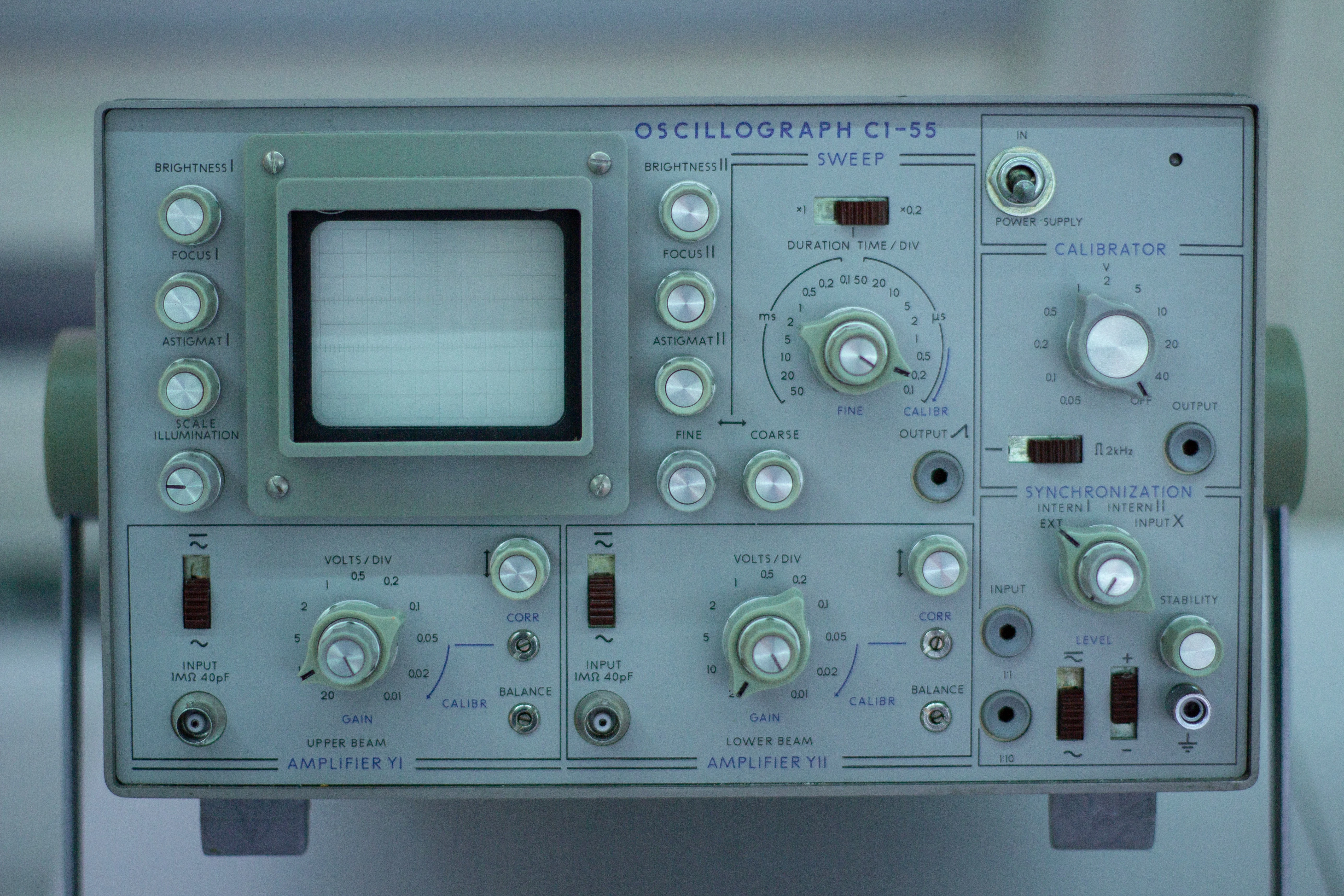Oscilloscope
An oscilloscope, also known as a scope or DSO (digital storage oscilloscope), is a type of electronic test instrument that allows users to visualize
and analyze electrical signals in a variety of electronic systems and devices. Oscilloscopes are commonly used in the field of electronics for a
wide range of applications, including troubleshooting, design, and testing.
The basic function of an oscilloscope is to convert an electrical signal into a visual representation that can be analyzed and measured.
This is achieved by using an electron beam that is directed at a phosphor screen, which creates a visible trace of the electrical signal.
The oscilloscope can then be used to measure various aspects of the signal, such as frequency, amplitude, and waveform.
uses of an oscilloscope

TOne of the main uses of an oscilloscope in the electronic field is for troubleshooting and debugging electronic circuits. An oscilloscope allows
engineers and technicians to visualize and analyze the electrical signals within a circuit, which can help to identify any issues or problems
that may be present. For example, an oscilloscope can be used to detect and locate signal distortion, noise, or other problems that may be
affecting the performance of a circuit
Another important use of oscilloscopes in electronics is in the design and development of new electronic devices and systems. Engineers and
designers use oscilloscopes to test and verify the performance of electronic circuits and components, which helps to ensure that they meet
the desired specifications and requirements.
In addition, oscilloscopes are widely used in the field of education and training, as they provide a powerful tool for teaching and
learning about electronic systems and devices. Many universities and technical schools use oscilloscopes in their electronic and electrical
engineering courses to help students understand the fundamental principles of electronics and gain hands-on experience with electronic test
equipment.